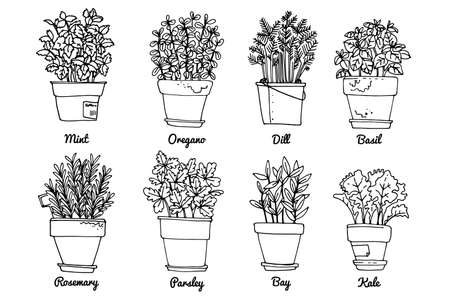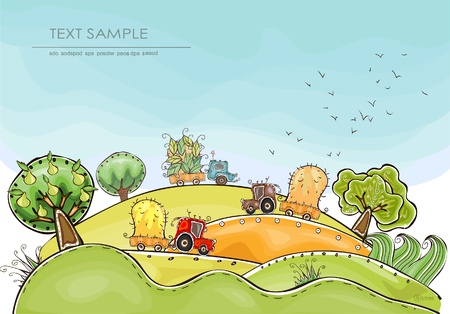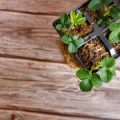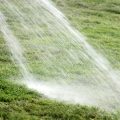1. Assess Your Space and Determine Your Goals
Before you start planting or sketching out your dream garden, its important to take a good look at what youre working with. Every successful garden starts with understanding your yard’s natural features and defining what you want to achieve.
Evaluate Your Yard
Start by walking around your outdoor space and paying attention to these key elements:
Yard Size
Measure the dimensions of your yard. This will help you figure out how much room you have for different types of plants, pathways, or seating areas.
Soil Quality
Dig a small hole and examine the soil. Is it sandy, clay-heavy, or loamy? Consider doing a simple soil test kit from a local garden center to check pH levels and nutrient content. Healthy soil is essential for plant growth.
Sun Exposure
Observe your yard throughout the day to see how much sunlight different areas receive. Note which parts get full sun (6+ hours), partial sun (3–6 hours), or mostly shade.
Climate Zone
Knowing your USDA Hardiness Zone helps you choose plants that will thrive in your area. You can find your zone by entering your ZIP code on the USDA website.
| Element | What to Look For | Why It Matters |
|---|---|---|
| Yard Size | Overall dimensions and shape | Affects layout and plant spacing |
| Soil Quality | Texture, color, drainage | Impacts root health and plant nutrition |
| Sun Exposure | Hours of direct sunlight daily | Helps pick the right plants for each area |
| Climate Zone | Your USDA Hardiness Zone | Guides plant selection for year-round success |
Define Your Garden Goals
Your garden should reflect your lifestyle and interests. Ask yourself what youd love to get out of this space:
- A vegetable patch: Great for homegrown produce and sustainable living.
- A pollinator-friendly haven: Ideal if you want to support bees, butterflies, and other beneficial insects.
- A relaxing retreat: Perfect for adding a patio, comfy seating, or even a fire pit for cozy evenings outdoors.
The clearer your goals are, the easier it will be to make design decisions that bring everything together in the next steps of planning your perfect garden blueprint.
2. Draw a Scaled Layout of Your Garden Area
Before planting a single flower or vegetable, it’s important to have a clear visual plan of your space. Drawing a scaled layout helps you see what fits where and ensures everything is proportionate. Whether youre using old-school graph paper or a modern garden planning app, the goal is the same: to create an accurate map of your garden area.
Start with Accurate Measurements
Grab a measuring tape and jot down the dimensions of your entire yard or garden plot. Be sure to include the length and width in feet or inches, depending on the scale you plan to use. If your space isn’t a perfect rectangle, measure each section separately and take note of any curves or odd angles.
Suggested Measurement Scale
| Real Measurement | Graph Paper Equivalent |
|---|---|
| 1 foot | 1 square |
| 5 feet | 5 squares |
| 10 feet | 10 squares |
This scale makes it easy to draw everything in proportion and helps you avoid overcrowding plants later on.
Add Existing Features
Your garden doesn’t exist in a vacuum—there are likely trees, fences, patios, sheds, or pathways already in place. Mark these on your layout so you can work around them. These features may cast shade, block wind, or limit access, all of which are important when deciding where to place new plants.
Common Features to Include:
- Trees (note size and shade direction)
- Shrubs or hedges
- Sheds or storage units
- Paved walkways or gravel paths
- Fences or walls
Select Your Drawing Method
You can sketch your layout by hand using graph paper, which gives you control over every detail. Alternatively, many people enjoy using digital tools like online garden planners or design software that allows for drag-and-drop simplicity. Some popular free options include SmartDraw, Gardena My Garden Planner, and Plan-A-Garden by Better Homes & Gardens.
Create Zones Within Your Layout
If youre planning for multiple types of plants—like vegetables, herbs, flowers, or shrubs—it helps to divide your layout into zones. This organization makes watering, sunlight planning, and maintenance easier in the long run.
| Zone Type | Description |
|---|---|
| Vegetable Bed | A sunny spot with good drainage for growing edibles. |
| Flower Border | An area along fences or paths for colorful blooms. |
| Sitting Area | A relaxing corner with room for chairs or a bench. |
An accurate layout is like having a map before going on a road trip—it sets you up for success and minimizes surprises down the line. In the next step, we’ll dive into how to choose the right plants based on sun exposure and soil type.

3. Choose the Right Plants for Your Region and Purpose
Now that you have a layout in mind and know how much space you’re working with, it’s time to select the plants that will bring your garden to life. Choosing the right plants isn’t just about picking your favorites — it’s about understanding your local climate, sunlight conditions, water availability, and gardening goals.
Understand Your USDA Plant Hardiness Zone
The USDA Plant Hardiness Zone Map is a helpful tool that divides North America into 13 zones based on average annual minimum winter temperatures. Knowing your zone helps you choose plants that can survive the winter in your area.
Find Your Zone
You can check your zone by visiting the USDA website or searching “USDA zone” plus your zip code. Here’s a quick overview of some common zones:
| Zone | Temperature Range (°F) | Example Regions |
|---|---|---|
| 3-4 | -40 to -20 | Northern Minnesota, North Dakota |
| 5-6 | -20 to 0 | Pennsylvania, parts of Illinois |
| 7-8 | 0 to 20 | Tennessee, North Carolina, Northern California |
| 9-10 | 20 to 40 | Florida, Southern Texas, Coastal California |
Match Plants to Sunlight Conditions
Your gardens sunlight exposure plays a major role in plant health. Observe how much sun each part of your yard gets during the day. Here’s how to categorize it:
| Light Level | Description |
|---|---|
| Full Sun | 6+ hours of direct sunlight daily (e.g., tomatoes, lavender) |
| Partial Shade | 3–6 hours of direct sunlight or filtered light (e.g., hydrangeas, ferns) |
| Full Shade | < 3 hours of direct sunlight (e.g., hostas, astilbes) |
Select Plants Based on Water Needs and Maintenance Level
If you live in an area prone to droughts or want a low-maintenance garden, consider drought-tolerant or native plants. Grouping plants with similar water needs together makes irrigation easier and more efficient.
| Drought-Tolerant Options | Description |
|---|---|
| Sedum (Stonecrop) | A succulent that thrives in dry conditions. |
| Lavender | Loves sun and needs very little water once established. |
| Echinacea (Coneflower) | Tough and beautiful with minimal watering needs. |
Add Seasonal Interest and Purpose
A well-designed garden offers beauty across all seasons. Mix flowering perennials with evergreens, bulbs for spring color, and ornamental grasses for fall texture. Also think about your purpose: do you want a pollinator-friendly garden? A vegetable patch? A quiet retreat?
- If supporting wildlife: Include milkweed for monarch butterflies or bee balm for pollinators.
- If growing food: Choose crops suited for your zone like tomatoes in Zone 7–10 or kale in cooler zones.
The Case for Native Plants
Natives are adapted to local conditions and support local ecosystems better than many exotic varieties. They typically need less water, fewer chemicals, and provide food and shelter for native birds and insects.
- Northeast: Purple coneflower, New England aster
- Southeast: Black-eyed Susan, coral honeysuckle
- Southeast: California poppy, manzanita
4. Plan Efficient Irrigation and Drainage Systems
Once youve mapped out your garden layout, its time to think about how youll keep your plants healthy and hydrated without wasting water or causing drainage problems. A smart irrigation and drainage plan is a key part of any successful garden blueprint.
Choose the Right Watering Method
Not all watering systems are created equal. Depending on your garden size, plant types, and local climate, some methods may work better than others. Heres a quick comparison:
| Irrigation Method | Best For | Pros | Cons |
|---|---|---|---|
| Drip Irrigation | Vegetable gardens, flower beds | Saves water, targets roots directly, reduces weed growth | Can clog if not maintained, setup takes time |
| Soaker Hoses | Shrubs, borders, raised beds | Simple to use, waters evenly along hose line | Less precise than drip systems, can waste water if left on too long |
| Rain Barrels + Manual Watering | Sustainable gardens, small plots | Eco-friendly, cost-effective over time | Requires effort and timing, limited by rainfall |
Add Smart Features Where Possible
If youre looking to save time and reduce water bills, consider installing a timer or even a smart irrigation controller that adjusts watering schedules based on weather forecasts and soil moisture levels.
Don’t Forget About Drainage
Poor drainage can lead to standing water and root rot—two common garden killers. Watch for areas where water tends to pool after rain. To improve drainage:
- Create gentle slopes in planting beds to help water flow away from roots.
- Add organic matter like compost to heavy clay soils to improve permeability.
- Install French drains or gravel trenches in problem spots.
A well-planned irrigation and drainage system ensures your plants get just the right amount of water without drowning their roots. Its an essential piece of your perfect garden blueprint.
5. Design for Aesthetics, Functionality, and Maintenance
Once you’ve mapped out your garden space and chosen the right plants, it’s time to bring it all together in a way that looks beautiful, works well, and stays manageable over time. Designing with purpose will help you enjoy your garden for years to come without constant upkeep.
Create a Cohesive Look
One of the easiest ways to make your garden visually appealing is to organize plants by their height, color, and bloom time. This keeps the landscape looking balanced throughout the seasons and prevents taller plants from overshadowing shorter ones.
Plant Arrangement Tips:
| Plant Feature | Design Tip |
|---|---|
| Height | Place taller plants at the back (or center for round beds) and shorter ones toward the front. |
| Color | Group complementary colors together or use a color theme to create harmony. |
| Bloom Time | Select a mix of early, mid, and late-season bloomers for year-round interest. |
Add Functional Elements
A great garden isn’t just about plants—it’s also about how you move through and use the space. Think about how youll interact with your garden day-to-day. Include paths wide enough for easy access, cozy seating areas for relaxation or entertaining, and even a spot for tools or a compost bin if needed.
Functional Features Checklist:
- Paths: Gravel, stepping stones, or pavers help define walkways and prevent soil compaction.
- Seating Areas: Benches or small patios encourage you to linger and enjoy your surroundings.
- Storage: Keep tools nearby in an attractive shed or storage bench to make gardening easier.
Plan for Easy Maintenance
No one wants to spend every weekend weeding or pruning. Choose low-maintenance plants suited to your region’s climate and soil. Group plants with similar water and sunlight needs together so you can care for them more efficiently. Also consider using mulch to reduce weeds and retain moisture.
Maintenance-Friendly Ideas:
- Drought-tolerant native plants require less watering.
- Perennials come back each year with minimal effort.
- Raised beds or container gardens make weeding and harvesting easier on your back.
By focusing on aesthetics, functionality, and maintenance from the start, your garden blueprint will not only look stunning but also fit seamlessly into your lifestyle.


